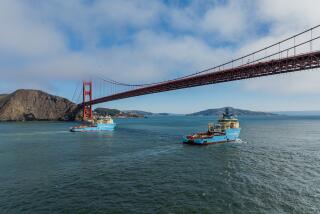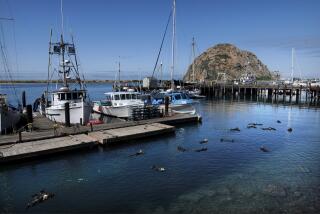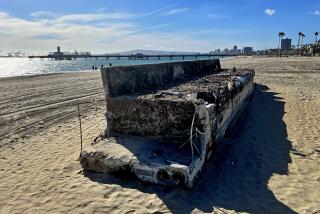Opinion: Oh, great — another plastic garbage patch in the Pacific Ocean
- Share via
Capt. Charles Moore, the sailor who brought the giant vortex of plastic debris floating in the north Pacific ocean to our attention, now says there is another enormous plastic patch growing in the South Pacific.
Moore and the research team from Long Beach-based Algalita Marine Research and Education, an organization he founded to highlight the problem of plastic in the ocean, report that they confirmed the existence of this second major gyre as part of a six-month research trip off the coast of Chile earlier this year. The good news, if you can call it that, is the source of the plastic in this plastic patch seems to be primarily from commercial uses as opposed to litter of consumer items.
Of course, plastic in the ocean, no matter its source, is a concern. And the problem isn’t limited to these patches of the ocean. Microplastics — that is former plastic water bottles and plastic foam coffee cups that have broken down into small bits — are found floating on the surface of all of the Earth’s oceans. Even the Great Lakes are plastic waste dumps.
This discovery isn’t terribly surprising to anyone plugged in to humanity’s disposable plastic addiction. One study found that 8 million tons of plastic flowed into the world’s oceans — and that was just in 2010. In a study published this week in the journal Science Advances, the same researchers calculated that humans have created more than 8 billion metric tons during the plastics boom of the 1950s. Only 9% of it has been recycled.
The amount of single-use plastic bags, containers, wrap, lids, straws and cutlery used and tossed increases every year, despite our somewhat feeble attempts to stem the tide. California’s ban on single-use plastic bags kicked in last year, but grocery “T-shirt” bags are only one class of plastic ocean litter. Also, the nation isn’t exactly rushing to follow California’s example — some places have even passed laws to forbid cities from banning plastic bags.
It’s nuts, yet even in this environmentally enlightened coastal state, we are arguing over policies to curb even the worst ocean litter offenders such as polystyrene takeout containers and cups. The state Legislature punted on a chance to adopt a statewide ban earlier this year and the plastic litter continues to pile up, quite literally, on the beach.
Hopefully, it won’t take the discovery of yet another giant plastic garbage patch to get some action to turn off the plastic faucet flowing into the ocean.
Follow me @marielgarzaLAT
UPDATES:
9:50 a.m.: This article was updated to add information about a study of the amount of plastic produced since the 1950s.
More to Read
A cure for the common opinion
Get thought-provoking perspectives with our weekly newsletter.
You may occasionally receive promotional content from the Los Angeles Times.







